Opioid Information for Patients
Patient education can be a key component in helping prevent and manage opioid misuse and addiction.
By providing patients with information about opioids and opioid misuse, encouraging them to ask questions, and sharing tips on safe disposal, you can empower patients to make healthy decisions and help keep them safe.
-
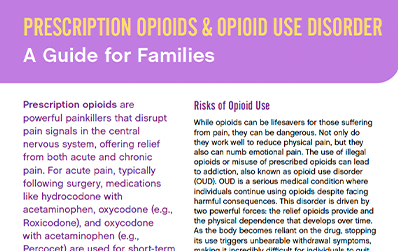 Understanding Opioids and the Risks of UseA guide about opioids, preventing addiction, and signs of opioid use disorder.DOWNLOAD PDF
Understanding Opioids and the Risks of UseA guide about opioids, preventing addiction, and signs of opioid use disorder.DOWNLOAD PDF -
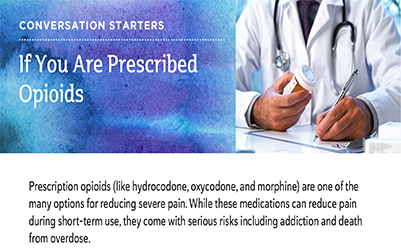 Conversation Starters for PatientsQuestions to ask your doctor about the benefits and risks of prescription opioids.DOWNLOAD PDF
Conversation Starters for PatientsQuestions to ask your doctor about the benefits and risks of prescription opioids.DOWNLOAD PDF -
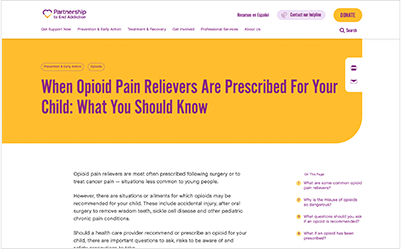 What to Know About Prescribed Opioids for Teens & Young AdultsRisks and safety precautions parents should know when opioids are prescribed for a child, and what to ask their doctor.VISIT SITE
What to Know About Prescribed Opioids for Teens & Young AdultsRisks and safety precautions parents should know when opioids are prescribed for a child, and what to ask their doctor.VISIT SITE -
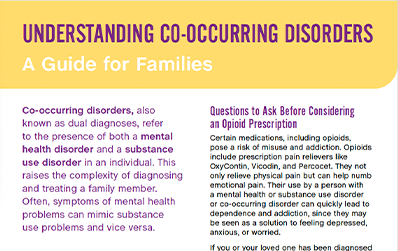 Opioids and Co-Occurring DisordersInformation about the link between substance use and mental health disorders.DOWNLOAD PDF
Opioids and Co-Occurring DisordersInformation about the link between substance use and mental health disorders.DOWNLOAD PDF -
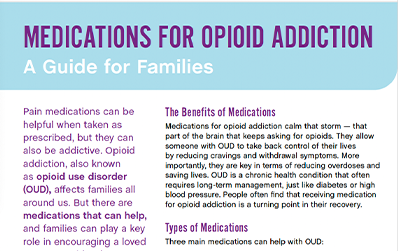 Treating Opioid AddictionThis guide explains the options and benefits of medications for opioid use disorder.DOWNLOAD PDF
Treating Opioid AddictionThis guide explains the options and benefits of medications for opioid use disorder.DOWNLOAD PDF -
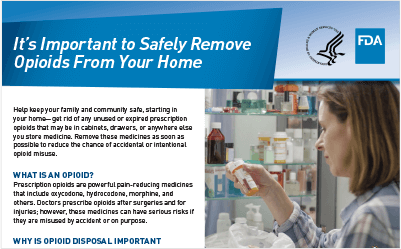 Safely Removing Opioids From the HomeInformation on how to keep families and their communities safe by disposing of unused or expired prescription opioids in the home.DOWNLOAD PDF
Safely Removing Opioids From the HomeInformation on how to keep families and their communities safe by disposing of unused or expired prescription opioids in the home.DOWNLOAD PDF -
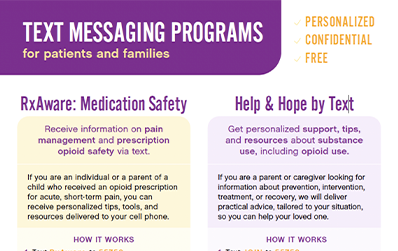 Medication Safety and Substance Use SupportPatients and families can receive customized information about prescription opioid safety and substance use.DOWNLOAD PDF
Medication Safety and Substance Use SupportPatients and families can receive customized information about prescription opioid safety and substance use.DOWNLOAD PDF
